Amazon's ‘The Rings Of Power’ Series Is A Crime Against The Fantasy Genre
Ever since Amazon announced that it would be creating a new series, based on the world of "Lord of the Rings," fans have been skeptical – and they were right to be.
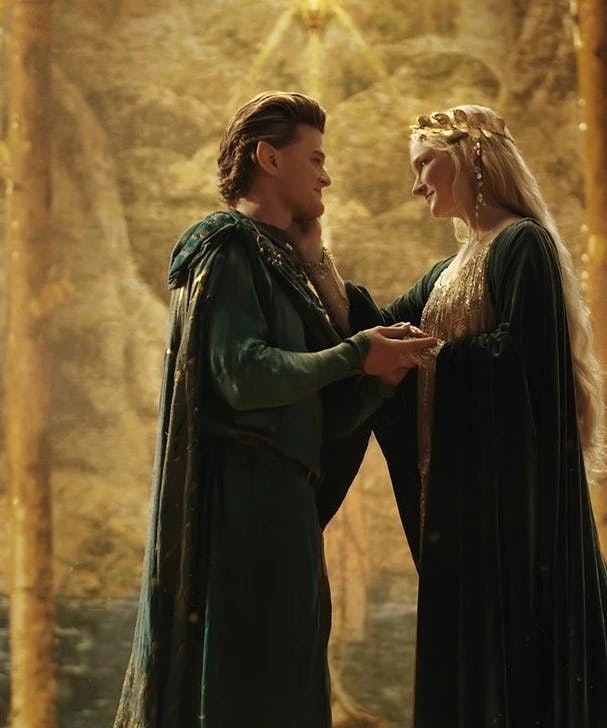
Tolkien’s world of Middle Earth has been notoriously difficult to bring to the big (or small) screen. As Peter Jackson said about making his trilogy, it was probably something that couldn’t have been done without 21st-century digital technology.
But it wasn’t access to modern animation and film technology that made Peter Jackson’s Lord of the Rings trilogy both a beloved series and the undefeatable standard to which all other fantasy series must now live up.
It was Jackson and his team’s absolute devotion to adapting the story in a way that stayed true to Tolkien’s vision of the world. The amount of thought and dedication that went into every single tiny detail of the movies is staggering in hindsight, yet what resulted are the most stunning fantasy movies ever created, and ones that stay true to the spirit and soul of Tolkien’s creation.
Now, Amazon has decided to take up the mantle of Middle Earth, and we can already tell that they’re not able to carry it. Last week, the first photos of the upcoming series were released, and the first trailer finally launched on Super Bowl Sunday. If the creative team behind this adaptation thinks they’re anywhere near Jackson’s creation, they’ve sorely misled themselves.
There is not a single aspect of this adaptation that seems to have been done correctly. From the cosplay-esque costumes, to the video game-style special effects, to the complete and utter disregard for Tolkien’s purpose in creating Middle Earth, the Amazon series spits in the face of the greatest fantasy series ever written.
Let’s Start Off with the Obvious – Forced “Diversity”
Amazon’s choice to “diversify” the world of Middle Earth has been met with a wave of backlash from fans – and rightfully so. Basically, the show writers’ justification for these choices is little more than lazy social justice jargon and displays their shocking lack of knowledge about Tolkien’s vision for creating Middle Earth.
“It felt only natural to us that an adaptation of Tolkien’s work would reflect what the world actually looks like,” says executive producer Lindsey Weber, “Tolkien is for everyone. His stories are about his fictional races doing their best work when they leave the isolation of their own cultures and come together.”
It’s clear that the Tolkien “scholars” who were consulted about the show are social justice revisionist scholars. One such “scholar,” Mariana Rios Maldonado, told Vanity Fair in response to the backlash about the diverse casting choices, “Obviously there was going to be push and backlash, but the question is from whom? Who are these people that feel so threatened or disgusted by the idea that an elf is Black or Latino or Asian?”
The modern social justice view of diversity is literally skin-deep, obsessed with hitting a certain quota of POC characters in order to feel relevant. But the diversity of Tolkien’s world doesn’t lie in skin color differences. There are different races of magical beings who live alongside men, and even the different cultures of men stand unique and apart from one another.
The diversity of Tolkien’s world doesn’t lie in skin color differences, but in the different races of magical beings who live alongside men.
Tolkien’s aim in writing Lord of the Rings was not to create some feel-good hero story about good triumphing over evil. He spent his life studying linguistics and the medieval folklore of the British Isles. He lamented the fact that true British history and folklore were lost in the Norman invasion of Britain. (The Normans were a group from modern-day France, who invaded Britain in 1066. In the process, much pre-Roman British history and culture were lost.)
Tolkien admired the grand mythologies of the Nordic peoples and the Greeks. He mourned the loss of true British history, and through his love of myth and language, tried to create a mythology that was unique to the British Isles. Hence, the birth of the stories of Middle Earth. While we may all be more familiar with The Lord of the Rings, that story is just one small part of an expansive world and mythology that Tolkien spent his life creating.
So, shoving the modern view of diversity into a pre-Anglo-Saxon mythological England makes little to no sense. On the one hand, it’s a slap in the face of Tolkien’s ultimate goal of creating this world and its stories. On the other hand, studios are still refusing to write interesting stories for non-white characters.
Instead of adapting a fantasy series that incorporates people of diverse backgrounds (like Wheel of Time, although Amazon STILL managed to mess that up in a big way – stay tuned for my thoughts on that series), or better yet, writing a fantasy story that is built on purpose to tell a story about a non-European, Amazon and Hollywood insist on forcing diversity into stories that don’t need it.
Why insist on relegating non-white actors to side roles where they can be “the first black female dwarf queen”? Activists hate the idea of the token black character, yet that’s all this is. It undermines the story, creates confusion and frustration among the actual fans, and relegates non-white actors to token roles rather than central important characters.
Diversity in a medieval world feels forced, because it is. No matter what the producers may say, medieval worlds didn’t look like the modern world. Travel across continents was nigh impossible and people tended only to interact with people who lived within a few miles of them. Cross-continental immigration was virtually unheard of. It’s not racist to question diversity in a medieval story, it’s logical.
Unfortunately, the social justice motivated casting decisions are just the beginning.
They Spent $465 Million to Make… This?
Jeff Bezos is apparently treating this series as a pet project where money is no object. But yet again, Amazon is proving that just having a big budget is no guarantee of high-quality production. The studio expects to spend a whopping $1 billion over five seasons.
It seems like every type of production failure has collided to make this series look like a bad live-action video game. The costume design is a crime, top to bottom. Characters either look like they popped out of 2022 for light time travel or out of a Game of Thrones cosplay meetup.
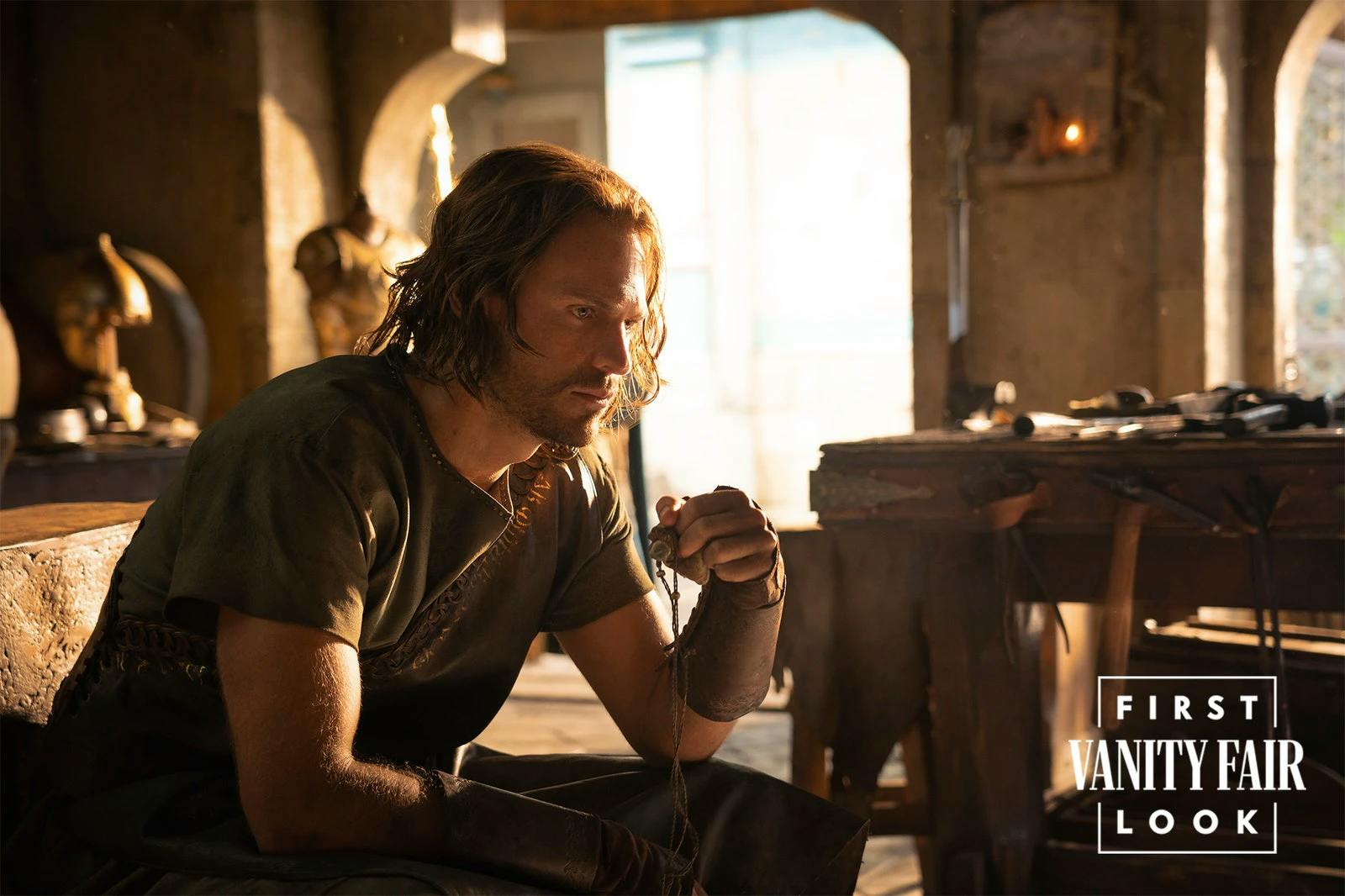
Is this a t-shirt?!
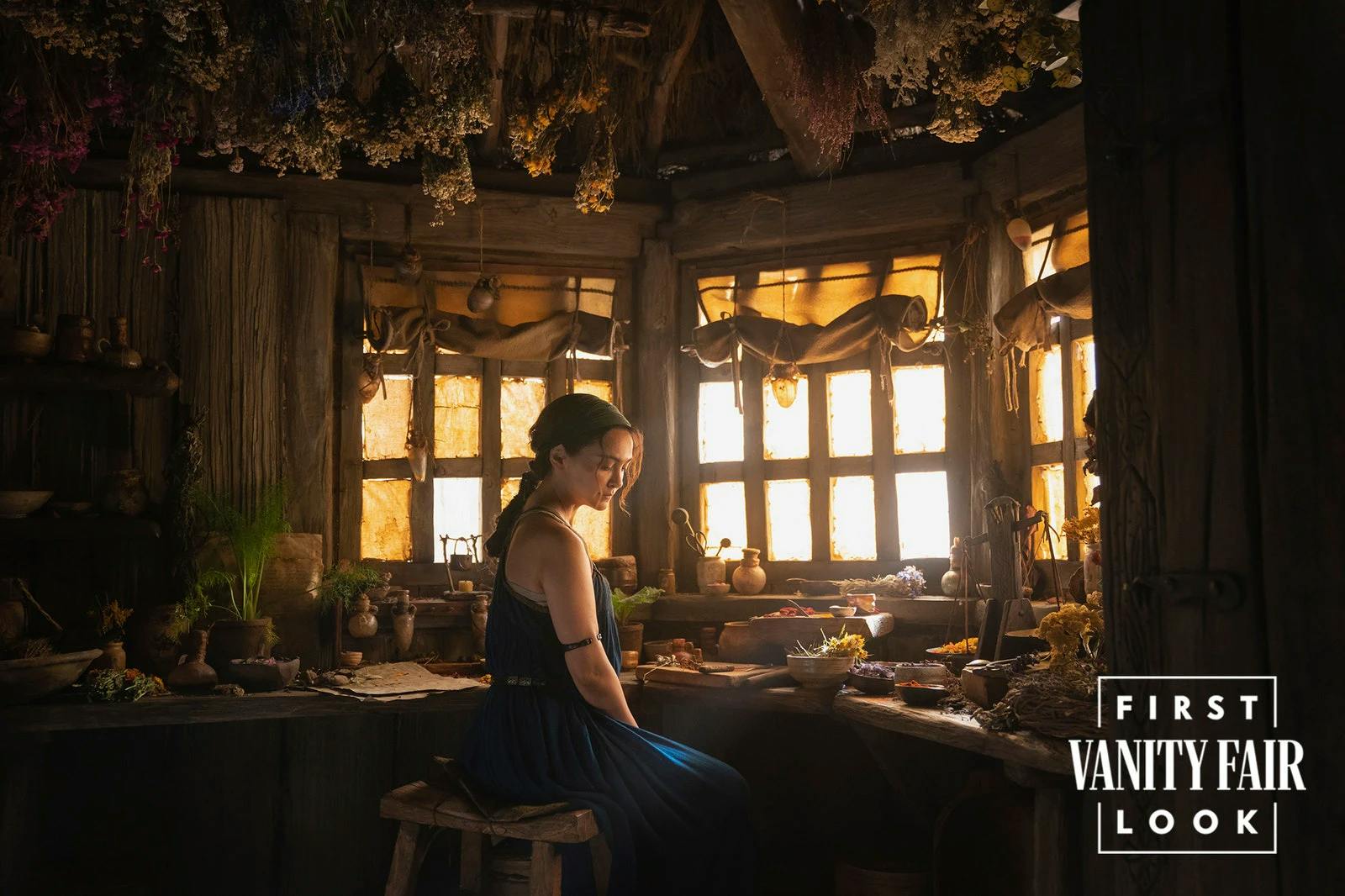
This character looks like a peasant version of Shay from Game of Thrones.
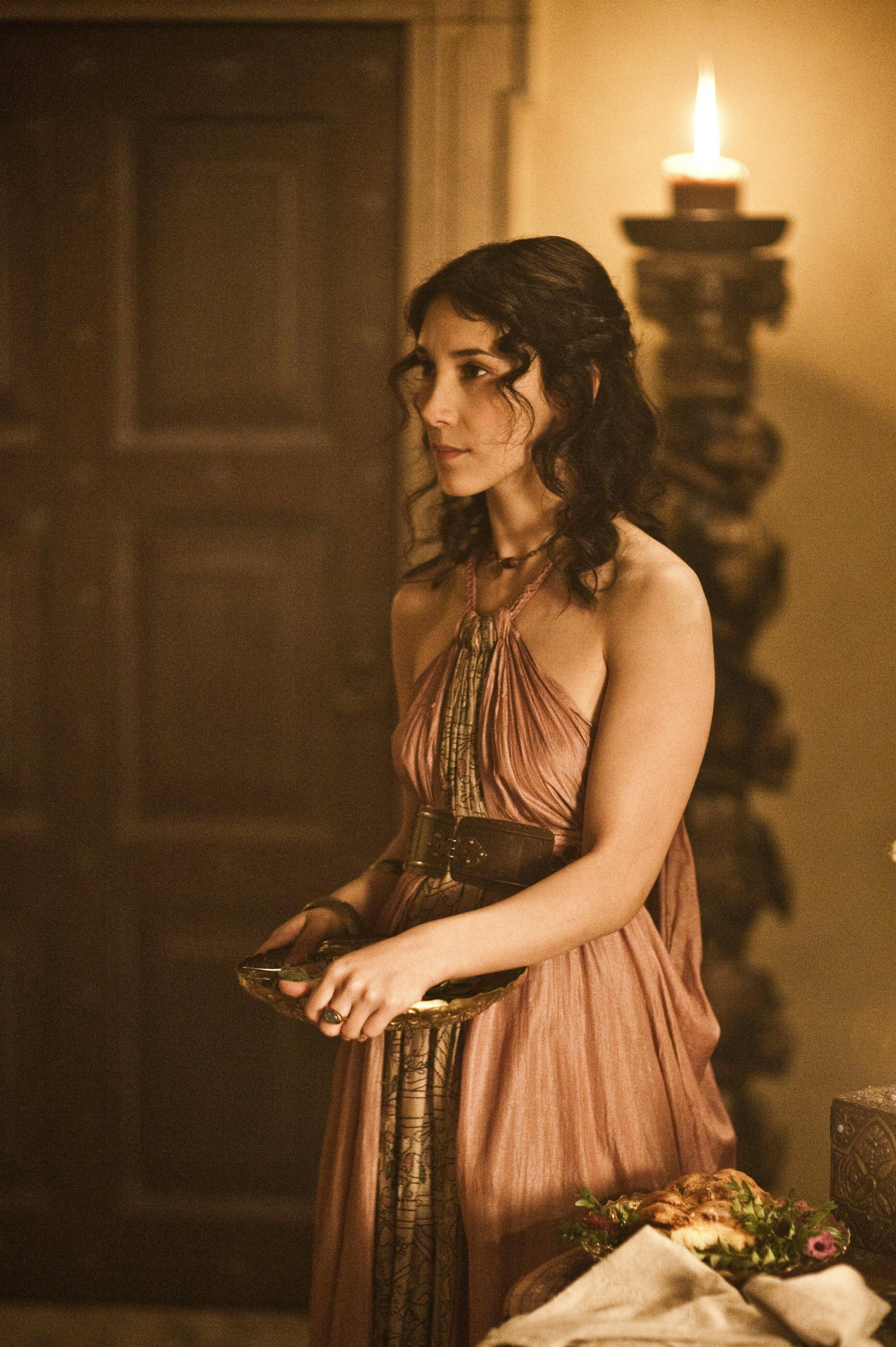
Jeff Bezos may be a fan of The Lord of the Rings, but we all know the real motivation behind this series to create the next Game of Thrones and capitalize on the fantasy series zeitgeist. But the problem is, in their rush to get a series out as quickly as possible, Amazon has abandoned the most essential and yet underestimated parts of fantasy moviemaking: costume and set design.
The burning question we should all be asking about the costume design here is, why bother reinventing the wheel? The entirety of the Tolkien fandom agrees that Jackson’s series set the bar for all future Middle Earth adaptations. And yet it seems Amazon is determined to ignore the work already done before them in favor of cheap, lazy costume design that immediately takes the viewer out of the story.
We don’t need fantasy stories to look like modern people dressed up for the day in medieval-esque clothing. Every aspect of a character’s design and wardrobe should serve to communicate about their culture, their personal history, and the world they live in. It’s all the subtle, often missed, details about a costume that truly give it a feeling of reality.
There are several reasons why the costumes in Peter Jackson’s series remain the best costume design in all of cinema history:
The costumes were just familiar enough to feel like they belong in a human world, but without being completely derivative of actual historical cultures. For example, the design of Rohan’s people was more Anglo-Saxon (as an ode to Tolkien’s love of British history), while the design of Gondorian costume was inspired by ancient Greece and Rome.
The different cultures felt contemporaneous with each other. They may have different styles and cultural legacies, but they still feel like they exist in the same place/time as each other.
They made sure to choose the appropriate fabrics and aging to suit a character. Aragorn would never have been the same if all his clothes looked brand new. Many of the characters have existed for a long time before the story begins, and this should be reflected in the clothing they wear.
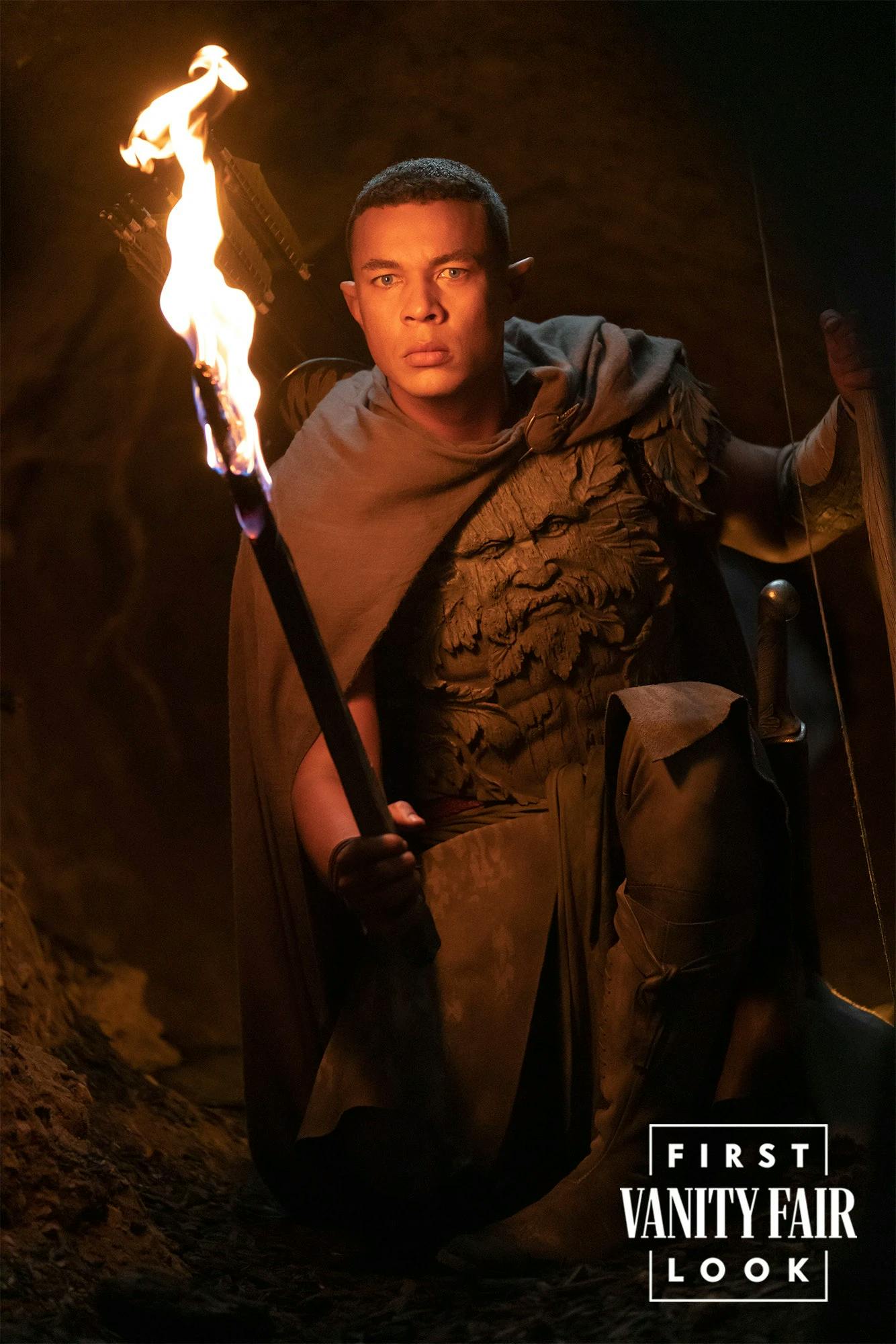
This cloak looks like it’s fresh back from the dry cleaners.
Many costume designers nowadays are incapable of designing compelling costumes because they lack the proper historical literacy and appreciation for the influence of culture on clothing that’s necessary to design clothing that feels real. Instead of conceptualizing clothing as a result of both function and cultural legacy, the costume designers for Amazon’s series seem to just have a checklist of what makes a show look medieval.
Cloaks? Check.
Boots? Check.
Armor? Check.
These designers are so unaware of how their own clothing is influenced by culture that their designs come off as childlike fumblings at a costume rather than a beautiful tapestry in which the story can be told. Instead of looking to real historical cultures, they simply copy whatever cool thing they saw on Game of Thrones. If I could hunt down the person who decided asymmetrical clothing was cool for fantasy worlds, they would hear an earful. I just beg everyone to stop with the derivative drivel that came out of Game of Thrones.
Sex, Blood, and Gore – Middle Earth Isn’t Game of Thrones
Another terrible idea that The Rings of Power planned to borrow from Game of Thrones was R-rated scenes of nudity and gore. The showrunners found themselves in trouble last year when a report leaked saying the show had hired intimacy coordinators and made it clear in the casting process that actors should be comfortable with doing nude scenes.
Fans responded by creating a petition urging Amazon not to include nudity and sex à la Game of Thrones. It seems the petition was successful, as showrunner Patrick McKay told Vanity Fair, the short answer is “no” when it comes to “Thrones”-level violence and sex.
But even though the showrunners may have cut or removed sexual scenes from the show, the fact that they wanted to include them in the first place shows a shocking disregard for how Tolkien would choose to portray love in his stories.
Although one may not realize it from reading the story, Tolkien was a true romantic in his private life. He fell in love as a teenager with a girl named Edith, but was forbidden to get engaged to her until he was an adult. But he was soon drafted into World War I, where he fought in the trenches and watched most of his close childhood friends die.
Amazon's original intent to include nudity shows a shocking disregard for how Tolkien would choose to portray love in his stories.
Having grown up an orphan and lost many people so close to him, Tolkien placed a very high value on his love of Edith and their four children. In fact, the most famous love story in all of Middle Earth, the story of the human man Beren who falls in love with the female elf Luthien, was inspired by his own love story with his wife. In the story of Beren and Luthien, Beren first sees Luthien dancing alone in a meadow. Tolkien based the scene on a memory he had of Edith dancing for him as a young woman in the woods.
When Edith died, Tolkien had the name Luthien inscribed on her headstone, as a tribute of his love for her. On his own gravestone, Tolkien had the word Beren inscribed. He saw his love story with his wife as something fit for old tales, and every great love story in Middle Earth shares a basis in the story of Beren and Luthien.
The most famous pairing people will know of is, of course, the romance between human Aragorn and elf Arwen. But in another of Tolkien’s stories, The Fall of Gondolin, we learn that Arwen’s story echoes that of her great-grandparents, a human named Tuor who escapes the destruction of his city at the hands of Morgoth and survives to marry Idril, an elf princess.
Since most of what we know about the great love stories of Tolkien’s writing comes from the appendices (like Aragorn and Arwen’s story) and separate manuscripts, one would think that the people charged with adapting the appendices into a story would have more respect for Tolkien’s treatment of love. But again, this adaptation is not about staying true to Tolkien’s vision. It’s about making money for Jeff Bezos and shoving social justice themes into everything good and inspiring in the world.
As Patrick McKay admits, the studio is not focused on staying true to Tolkien, but on abusing his legacy in order to create “the novel Tolkien never wrote and do it as the mega-event series that could only happen now.”
I think it’s fair to say that fans are right to be mad about this.
Studios Think Fans Should Show Up and Pay Money – Even If What They’re Watching Is Trash
There is truly a book’s worth of critiques over what Amazon has done to Tolkien’s world. They have eviscerated the spirit of Middle Earth both in its intention to create a unique British mythology and its ideals of courage, resilience, and hope in the face of certain defeat.
But I’m going to move on to the worst crime Amazon is committing against fans of Tolkien’s world. The idea of mega-hit series with loyal fanbases can probably be traced back to Star Wars. Although the trilogy first appeared in the late ‘70s and early ‘80s, there was a massive resurgence in popularity for the series when George Lucas released Episodes I, II, and III as prequels 20 years later. Then, the massive success of Peter Jackon’s Lord of the Rings around the same time cemented the idea in the heads of studio execs that epic stories could sell big tickets and create moneymakers for decades to come.
Star Wars has now been around long enough for its fandom to be used and abused by a new, horrendously bad trilogy that Disney expected to be a huge moneymaker. Even Peter Jackson was forced to return to make The Hobbit, which the studios converted from a short children’s book into a three movie slog with bad special effects. And now, Amazon plans to continue this strategy.
Studio execs don’t see fans as loyal people to whom they owe a great story, just as sources of profit.
Studio executives, like the ones who made the new Star Wars trilogy, have absolutely no love or loyalty to the original series they want to continue on. They don’t see fans as loyal people to whom they owe a great story and production. Instead, the studios see fans as deep-pocketed losers who will throw money at whatever new fan-favorite series they decide to plop down next.
In essence, the studios don’t feel that they owe fans something that’s actually good or enjoyable to watch. They pay exorbitant prices for the rights to a series in order to slap together whatever will be just good enough to get people to watch and spend money on merch.
Closing Thoughts
If studios like Amazon want fans to show up and spend money on this new series, I hope they’re sorely disappointed. Fans are owed more than whatever scraps the studio decides to throw their way. Peter Jackson’s Lord of the Rings trilogy deserved all it has gotten and more. But Peter Jackson, and his amazing team, created that series to stay true to Tolkien and what his fans would want. Amazon is only interested in what Jeff Bezos wants, and everyone else is just expected to show up and be grateful for it.
Love Evie? Let us know what you love and what else you want to see from us in the official Evie reader survey.